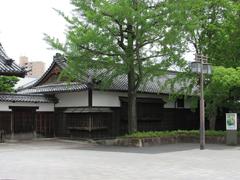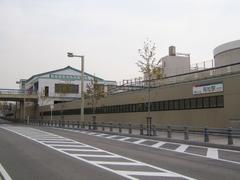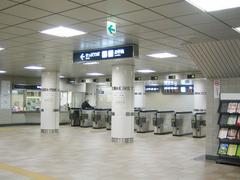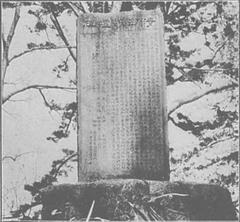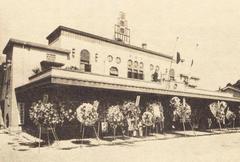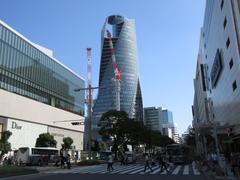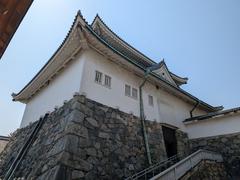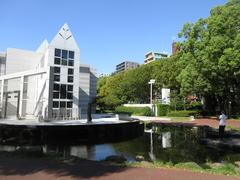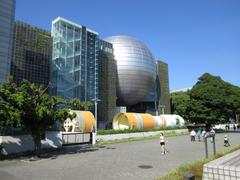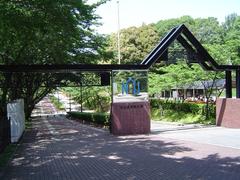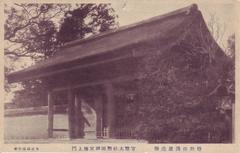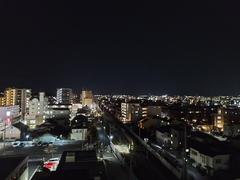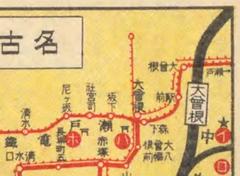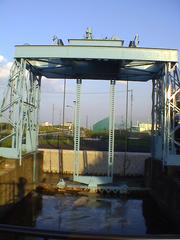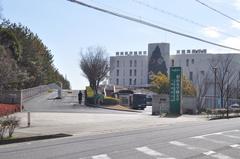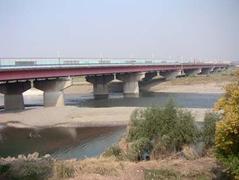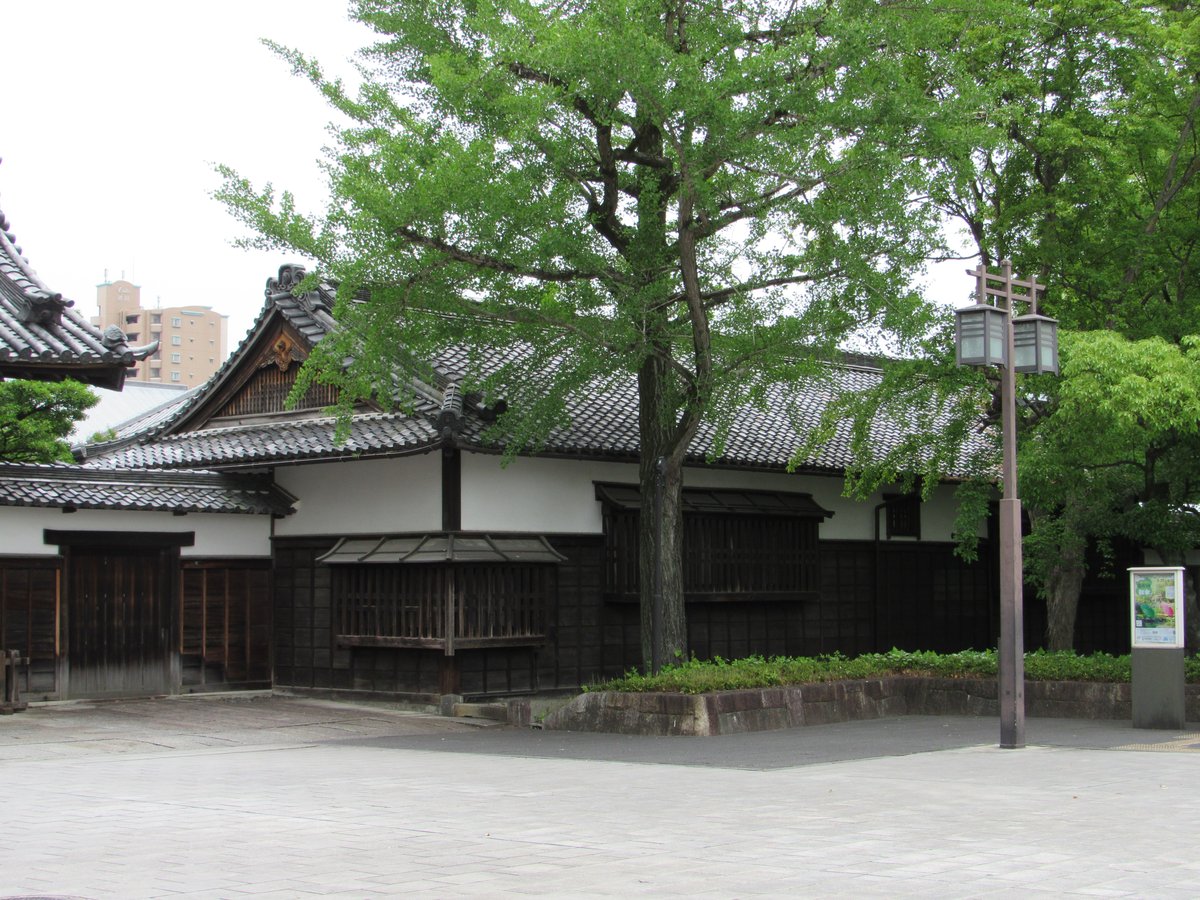
Comprehensive Guide to Visiting Tokugawa Garden, Nagoya, Japan
Date: 18/07/2024
Introduction
Nestled in the heart of Nagoya, Japan, Tokugawaen Garden is a historical gem that offers visitors a profound glimpse into Japan’s rich cultural tapestry. Originally established in 1695 by Tokugawa Mitsutomo, the second lord of the Owari branch of the Tokugawa clan, the garden was initially created as a private estate adjacent to his villa. Over centuries, Tokugawaen has transformed and reinvented itself, mirroring the changing fortunes of the Tokugawa family and the socio-political shifts of Japan itself (City of Nagoya). Recognized for its cultural significance, Tokugawaen Garden was acquired by the city of Nagoya in 1931, transitioning from a private estate to a public park, and opened to the public in 1952 (Tokugawaen Official Site).
Renowned for its harmonious blend of traditional Japanese garden styles, Tokugawaen epitomizes key principles of Japanese aesthetics, such as harmony with nature, miniature landscapes, seasonal beauty, and deep symbolism. The garden features elements like the serene Ryusen Lake, the dynamic Oiso Waterfall, and traditional tea houses that invite contemplation and reflection. Each season transforms the garden into a unique visual and sensory experience, from the cherry blossoms of spring to the fiery foliage of autumn (Tokugawaen).
This guide aims to provide comprehensive information on visiting hours, ticket prices, travel tips, and nearby attractions, ensuring that your visit to Tokugawaen Garden is both enriching and memorable. Whether you are a history enthusiast, a lover of Japanese culture, or simply seeking a tranquil escape, Tokugawaen offers an unparalleled journey through time and nature.
Table of Contents
- Historical Background and Cultural Significance of Tokugawaen
- Exploring Tokugawaen Garden - Visiting Hours, Tickets, and Seasonal Highlights
- Conclusion
- FAQ
- References
Historical Background and Cultural Significance of Tokugawaen Garden
Tokugawaen Garden, nestled in the heart of bustling Nagoya, is not merely a picturesque landscape; it’s a living testament to Japan’s rich history and cultural heritage. Its story intertwines with the powerful Tokugawa clan, offering a glimpse into the grandeur and aesthetic sensibilities of a bygone era.
The Edo Period and the Birth of a Garden
The garden’s origins can be traced back to 1695 during the Edo period, a time of peace and prosperity under the Tokugawa shogunate. It was during this time that Tokugawa Mitsutomo, the second lord of the Owari branch of the Tokugawa clan, established his residence in Nagoya. Adjacent to his villa, he commissioned the creation of a sprawling garden. This garden, initially named Ozashiki Garden, served as a symbol of the family’s power and prestige, a place for leisurely strolls, elegant tea ceremonies, and gatherings of esteemed guests.
Transformation and Reinvention
Over the years, the garden underwent several transformations, reflecting the changing fortunes of the Tokugawa clan and the impact of historical events. In the late 19th century, the Meiji Restoration brought about the end of the shogunate and the rise of a new era. The Tokugawa family lost their political dominance, and their once-grand estate, including the garden, fell into decline. However, the garden’s beauty and historical significance were not forgotten.
A Legacy Preserved - From Private Estate to Public Park
Recognizing the garden’s cultural value, the city of Nagoya acquired the land in 1931. This acquisition marked a turning point, as the garden transitioned from a private estate to a public park. Extensive renovations were undertaken, drawing inspiration from the garden’s Edo-era roots while incorporating modern landscaping techniques. In 1952, the garden was officially opened to the public under the name “Tokugawaen,” solidifying its status as a cherished cultural asset for the city of Nagoya and a testament to the enduring legacy of the Tokugawa clan.
Cultural Significance - A Microcosm of Japanese Aesthetics
Tokugawaen Garden stands as a captivating example of a traditional Japanese landscape garden, embodying key principles of Japanese aesthetics:
-
Harmony with Nature: The garden seamlessly blends natural elements like water, rocks, and plants to create a sense of tranquility and balance. The central pond, Ryusen Lake, reflects the surrounding greenery, blurring the lines between the built and natural environments.
-
Miniature Landscapes: The garden masterfully condenses vast natural landscapes into a smaller scale. Rolling hills, meandering streams, and carefully placed stones evoke the grandeur of mountains and rivers, inviting contemplation and a sense of awe.
-
Seasonal Beauty: Tokugawaen is designed to be appreciated throughout the year, with each season offering a unique display of colors and scents. From the vibrant blooms of spring to the fiery hues of autumn foliage, the garden provides a constantly evolving tapestry of natural beauty.
-
Symbolism and Hidden Meanings: Beyond their aesthetic appeal, the garden’s elements often carry deeper symbolic meanings. For instance, the placement of stones, the flow of water, and the selection of specific plant species can represent philosophical concepts or allude to literary works.
Exploring Tokugawaen Garden - Visiting Hours, Tickets, and Seasonal Highlights
Design, Layout, and Seasonal Highlights
Tokugawaen Garden masterfully blends elements of three distinct Japanese garden styles - the hill garden, the dry landscape garden, and the strolling garden. This harmonious fusion creates a captivating landscape that offers diverse experiences as visitors meander through its paths.
Hill Garden (Tsukiyama)
The hill garden style, prominent during the Edo period, aimed to recreate famous mountain landscapes in miniature. Tokugawaen achieves this through its central pond, representing a lake, surrounded by artfully sculpted hills and strategically placed stones. This technique creates an illusion of vastness and depth, transporting visitors to a serene mountain retreat within the heart of the city.
Dry Landscape Garden (Karesansui)
Contrasting the lushness of the hill garden, Tokugawaen incorporates elements of the dry landscape garden, often associated with Zen Buddhism. This style emphasizes meditation and contemplation through abstract representations of natural elements. The garden’s rock formations, meticulously arranged amidst raked gravel, symbolize mountains, islands, or even flowing water, encouraging visitors to find beauty in simplicity and engage in quiet reflection.
Strolling Garden (Chisen-kaiyushiki-teien)
As a strolling garden, Tokugawaen invites leisurely exploration along winding paths that reveal picturesque views from various angles. The garden’s layout encourages visitors to pause at designated spots, such as bridges, tea houses, and strategically placed benches, to fully appreciate the evolving scenery and contemplate the beauty of each carefully curated vista.
Key Features and Seasonal Highlights
Tokugawaen’s allure lies not only in its diverse garden styles but also in its captivating features and the ever-changing tapestry of colors woven by the seasons.
Ryusen Lake and Black Pine Trees
The central feature of Tokugawaen is the serene Ryusen Lake, its tranquil waters reflecting the surrounding foliage and creating a sense of peace and tranquility. The lake is home to colorful koi carp, adding a touch of vibrancy to the serene atmosphere. Surrounding the lake are majestic black pine trees, their dark green needles contrasting beautifully with the vibrant hues of the changing seasons.
- Spring: Witness the delicate dance of cherry blossoms reflected in the lake’s mirror-like surface, their pink hues painting a picture of ephemeral beauty.
- Summer: Find respite from the heat under the cool shade of the black pines, their evergreen presence a symbol of enduring strength.
- Autumn: Marvel at the fiery spectacle of autumn leaves, their crimson, gold, and russet tones transforming the garden into a breathtaking canvas.
- Winter: Experience the serene beauty of the garden cloaked in a blanket of snow, the black pines standing tall against the pristine white backdrop.
Oiso Waterfall and Streams
Adding to the garden’s dynamism is the Oiso Waterfall, its cascading waters creating a soothing soundtrack to the tranquil surroundings. Meandering streams, fed by the waterfall, flow through the garden, connecting different sections and adding a sense of movement and life.
- Spring: Listen to the gentle gurgling of the streams, their waters carrying the sweet scent of blooming flowers.
- Summer: Find solace in the cool mist rising from the waterfall, a refreshing escape from the summer heat.
- Autumn: Watch as fallen leaves dance along the water’s surface, their vibrant colors adding to the autumnal tapestry.
- Winter: Witness the mesmerizing sight of icicles clinging to the waterfall’s edge, transforming it into a shimmering ice sculpture.
Tea Houses and Rest Areas
Interspersed throughout the garden are traditional tea houses, offering visitors a chance to experience the Japanese tea ceremony and savor the tranquility of their surroundings. These serene spaces provide a welcome respite from exploration, allowing guests to relax and immerse themselves in the garden’s peaceful ambiance.
- Year-round: Enjoy a cup of matcha tea and traditional Japanese sweets while contemplating the beauty of the garden.
Seasonal Flower Displays
Tokugawaen boasts a rich variety of flora, ensuring a vibrant display of colors throughout the year. From the delicate blossoms of spring to the fiery hues of autumn, the garden constantly evolves, offering a unique experience with each visit.
- Spring: Be captivated by the vibrant hues of azaleas, wisteria, and peonies, their blooms painting the garden in a riot of color.
- Summer: Find tranquility amidst the serene beauty of irises and hydrangeas, their delicate petals offering a sense of calm and serenity.
- Autumn: Marvel at the fiery spectacle of maple trees, their leaves transforming into a breathtaking tapestry of crimson, gold, and russet.
- Winter: Discover the subtle beauty of winter-blooming camellias and plum blossoms, their delicate flowers adding a touch of color to the serene landscape.
Visitor Information
Visiting Hours
Tokugawaen Garden is open daily from 9:30 AM to 5:30 PM, with last entry at 5:00 PM. The garden is closed on Mondays (or the following day if Monday is a national holiday) and from December 29 to January 1.
Tickets
- General Admission: 300 yen
- Students (High School and University): 200 yen
- Children (Elementary and Junior High School): 100 yen
- Infants: Free
Accessibility
Tokugawaen Garden is accessible to visitors with disabilities, with paved paths and ramps available throughout the garden. Wheelchairs are available for rent at the entrance.
Nearby Attractions
While visiting Tokugawaen Garden, take the opportunity to explore other nearby attractions in Nagoya:
- Tokugawa Art Museum: Located adjacent to the garden, this museum houses an extensive collection of art and artifacts from the Tokugawa family. (Tokugawa Art Museum)
- Nagoya Castle: A short drive away, this iconic castle offers a glimpse into Japan’s feudal past with its impressive architecture and historical exhibits.
- Higashiyama Zoo and Botanical Gardens: A short subway ride away, this expansive park offers a combination of zoological and botanical attractions. (Higashiyama Zoo and Botanical Gardens)
Travel Tips
- Best Time to Visit: Each season offers a unique experience, but spring and autumn are particularly popular for their vibrant floral displays and foliage.
- Photography: The garden offers numerous picturesque spots, but be mindful of other visitors and the tranquility of the environment.
- Guided Tours: Consider joining a guided tour to gain deeper insights into the garden’s history and design principles.
Conclusion
Tokugawaen Garden stands as a serene oasis amidst the bustling urban landscape of Nagoya, offering visitors an immersive experience into the rich cultural and historical heritage of Japan. Its meticulously maintained landscape, which seamlessly blends traditional Japanese garden styles, serves as a testament to the enduring legacy of the Tokugawa clan and the Edo period. Each season brings a unique charm to the garden, making it a destination that can be visited and admired throughout the year (Nagoya City).
The garden’s accessibility, diverse features, and proximity to other significant attractions like the Tokugawa Art Museum and Nagoya Castle make it a must-visit for anyone traveling to Nagoya. Whether you are exploring the tranquil Ryusen Lake, participating in a traditional tea ceremony at one of the tea houses, or simply enjoying the vibrant seasonal displays, Tokugawaen offers a rich tapestry of experiences that cater to a wide array of interests.
In conclusion, Tokugawaen Garden is not merely a historical site but a living legacy that continues to captivate and inspire visitors. Its blend of natural beauty, cultural significance, and historical depth ensures that it remains a cherished cultural asset for both the city of Nagoya and the broader global community. Plan your visit today to explore this historical treasure and immerse yourself in the serene beauty and rich history of Tokugawaen Garden.
FAQ
What are the visiting hours for Tokugawaen?
- Tokugawaen is open daily from 9:30 AM to 5:30 PM, with last entry at 5:00 PM. The garden is closed on Mondays (or the following day if Monday is a holiday) and from December 29 to January 1.
How much do tickets to Tokugawaen cost?
- General Admission: 300 yen
- Students (High School and University): 200 yen
- Children (Elementary and Junior High School): 100 yen
- Infants: Free
Is Tokugawaen wheelchair accessible?
- Yes, the garden is wheelchair accessible, with ramps and pathways designed for ease of movement.
Are guided tours available?
- Yes, guided tours are available on request. Check the official website for more details.
What are some nearby attractions?
- Tokugawa Art Museum, Nagoya Castle, Higashiyama Zoo and Botanical Gardens.
References
- City of Nagoya https://www.city.nagoya.jp/
- Tokugawaen Official Site https://www.tokugawaen.com/
- Tokugawa Art Museum https://www.tokugawa-art-museum.jp/en/
